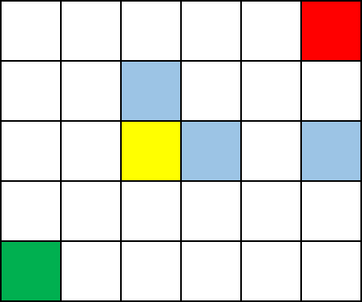CF1719A Chip Game
题目描述
Burenka 和 Tonya 正在玩一种布里亚特的古老游戏,游戏在一个 $n \times m$ 的棋盘上进行,棋盘上有一个棋子。
游戏开始时,棋子位于棋盘的左下角。在每一步中,玩家可以将棋子向右或向上移动任意奇数个格子(但一次不能同时向右和向上移动)。无法移动棋子的玩家判负。
Burenka 先手,双方轮流操作。Burenka 非常想赢得比赛,但她懒得思考策略,所以你需要帮她解决这个难题,找出谁会获胜(假设 Burenka 和 Tonya 都是玩棋子游戏的高手,总是采取最优策略)。
 棋子的起始格子为绿色,唯一无法移动的格子为红色。如果棋子在黄色格子上,则蓝色格子都是一步可以到达的位置。
输入格式
第一行包含一个整数 $t$($1 \leq t \leq 10^4$),表示测试用例的数量。接下来每个测试用例占一行,每行包含两个整数 $n$ 和 $m$($1 \leq n, m \leq 10^9$),表示棋盘的尺寸。
输出格式
对于每个测试用例,输出一行,表示游戏的获胜者("Burenka" 或 "Tonya")。
说明/提示
在第一个样例中,Burenka 无法移动,因此 Tonya 获胜。
在第二个样例中,Burenka 可以向右移动 $3$ 格,此后 Tonya 无法再移动,因此 Burenka 获胜。
在第三个样例中,Burenka 可以向右移动 $5$ 格。此时可以认为游戏变成了一个 $1 \times 5$ 的棋盘,Tonya 先手。在这种情况下,后手获胜,因此在原游戏中 Burenka 获胜。
由 ChatGPT 4.1 翻译